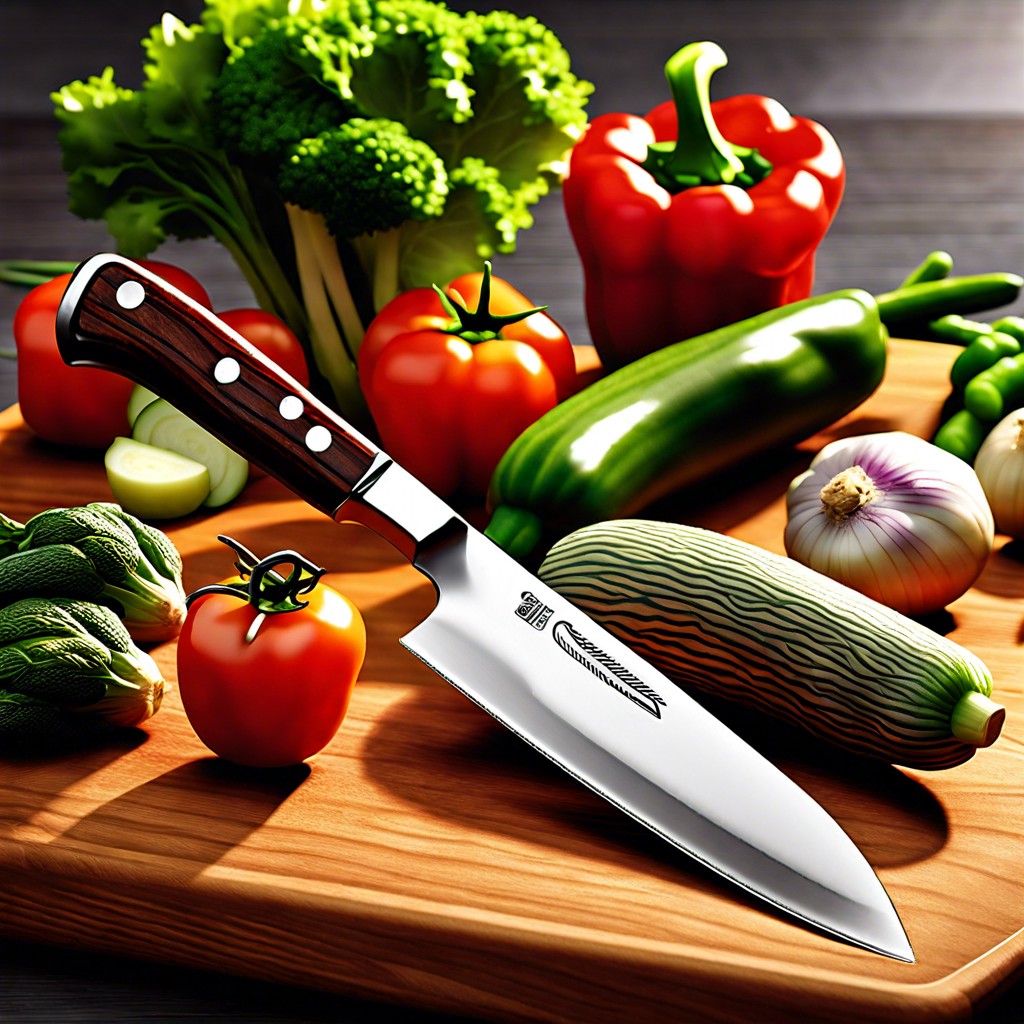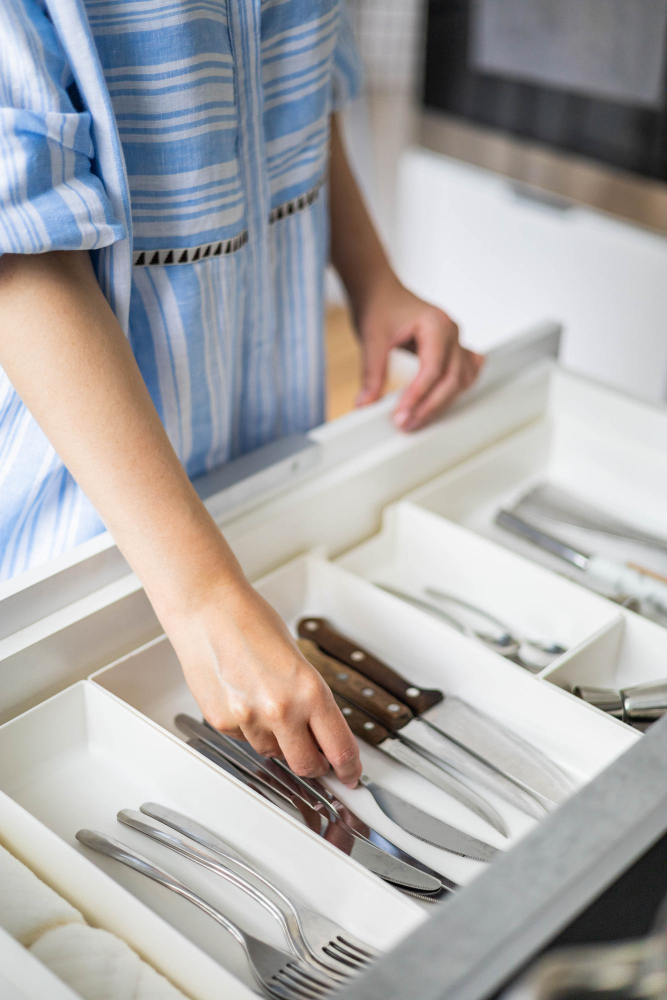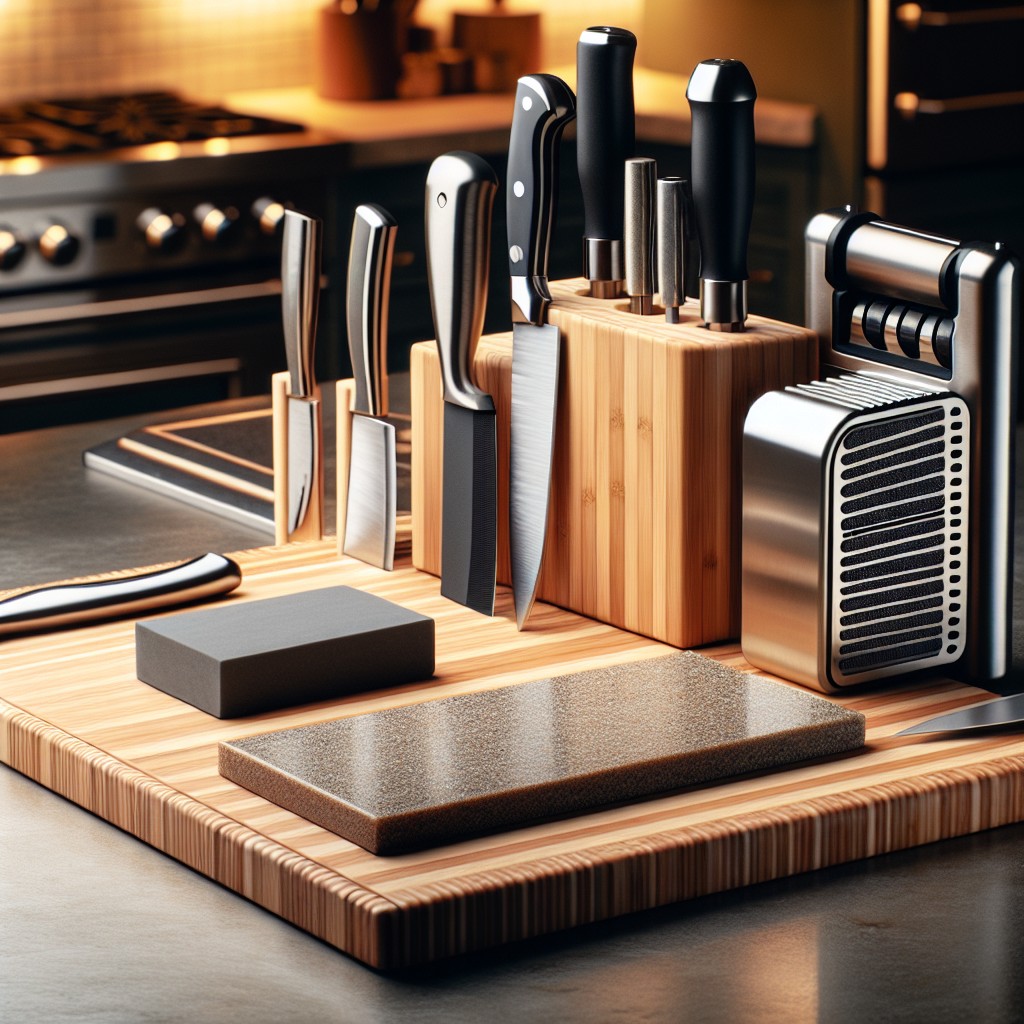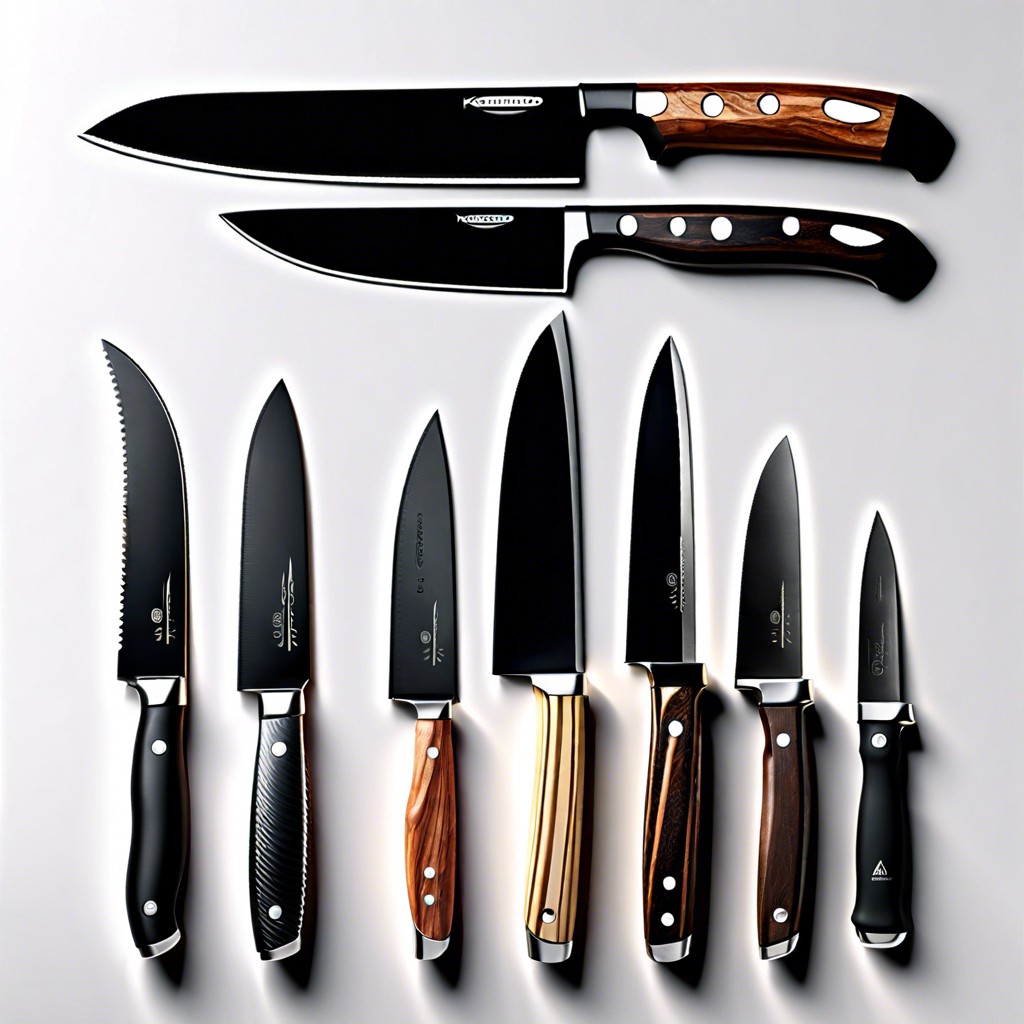Last updated on
Discover the ideal grit whetstone for sharpening your kitchen knives, ensuring peak performance and precision in every slice and dice.
As a home cook, there’s nothing more frustrating than trying to prepare a meal with dull knives. Not only does it slow down the cooking process, but it can also be dangerous.
That’s why investing in a good whetstone is essential for any kitchen. However, with so many different grits available, it can be overwhelming to know which one to choose.
In this article, we’ll break down what grit whetstone is best for kitchen knives and provide some tips on how to properly sharpen your blades. So grab your favorite knife and let’s get started!
Key takeaways:
- #1000 or less grit for repairing chips or damaged edges
- #1000-#3000 grit for regular sharpening maintenance
- #4000-#8000 grit for polished finish and enhanced sharpness
- Coarser grits (around #1000) for Western-style knives
- Finer grits (between #3000-#8000) for Japanese-style knives
What's Inside
Types of Whetstones
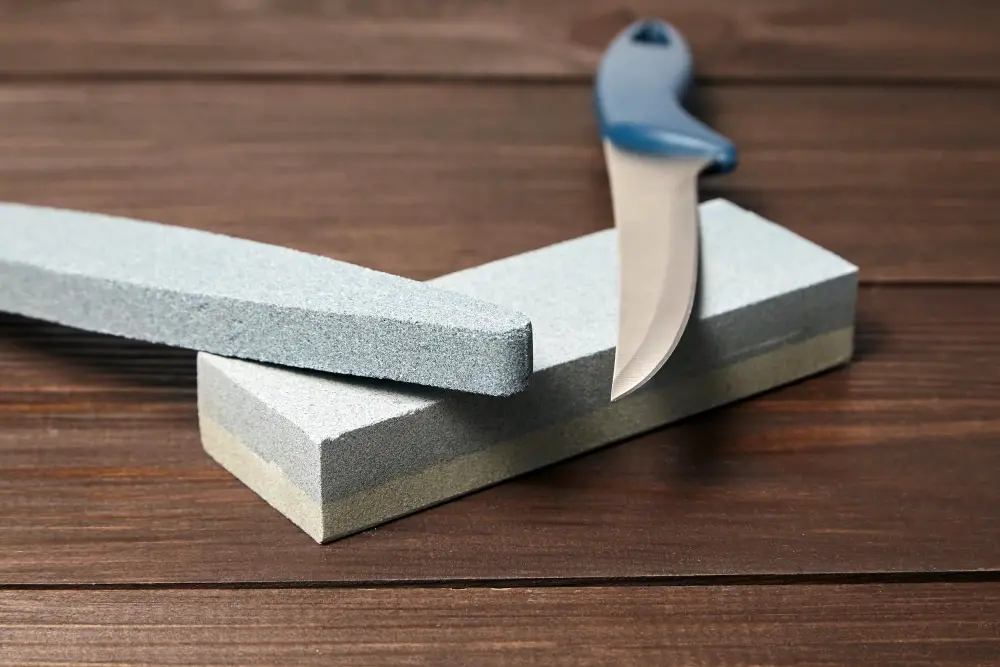
Natural whetstones are made from materials like Novaculite, which is found in Arkansas, USA or Belgian Blue Stone. These stones tend to be more expensive and require a bit more maintenance than synthetic options.
Synthetic whetstones, on the other hand, are made from materials like aluminum oxide or silicon carbide. They’re often less expensive than natural stones but can still provide excellent results when sharpening your kitchen knives.
Within these two categories of whetstones exist different subtypes based on their composition and intended use. For example:
- Oil Stones: Require oil as a lubricant during use.
- Water Stones: Need water instead of oil for lubrication.
- Diamond Stones: Use diamond abrasive particles for faster sharpening.
Each type has its own unique characteristics that make them suitable for specific tasks or knife types. Understanding the differences between these various types will help you choose the right one(s) for your needs when selecting a grit size later in this article
Grit Sizes Explained
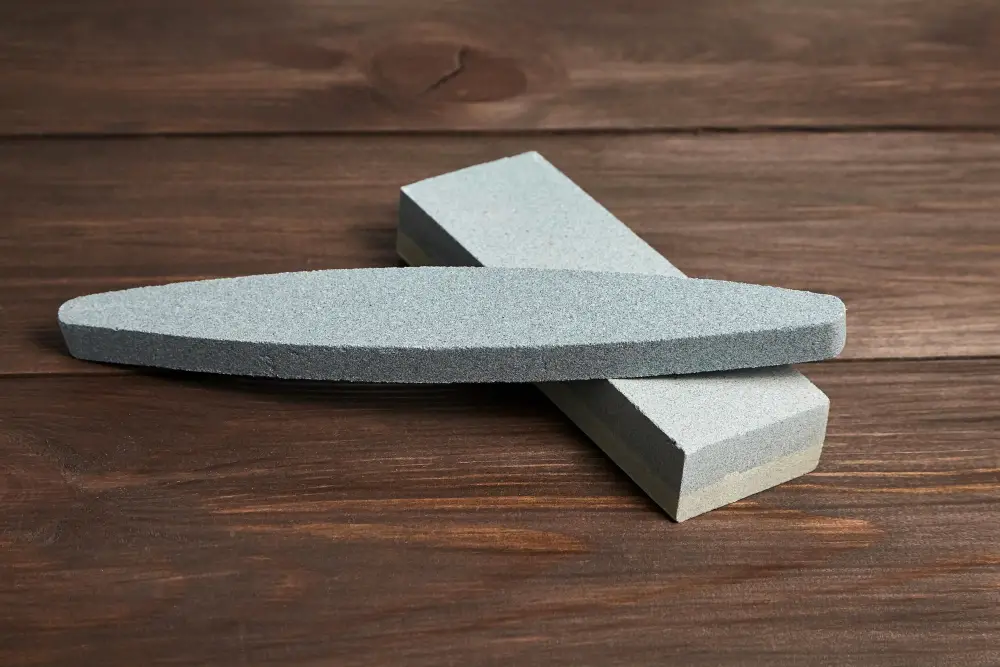
Grit refers to the number of abrasive particles per square inch on a stone’s surface. The higher the grit number, the finer and smoother its surface will be.
In general, there are three main categories of whetstone grit: coarse (less than #1000), medium (#1000-#3000), and fine (#4000-#8000). Coarse stones are used for repairing chips or damaged edges on knives while medium stones are ideal for regular sharpening maintenance.
Fine stones provide a polished finish that enhances sharpness and edge retention.
It’s essential to choose an appropriate grit size based on your knife’s condition and intended use. For example, if you have a dull blade with nicks or chips in it, start with a coarse stone before moving onto finer ones gradually.
Understanding how different levels of abrasiveness affect your knife can help you achieve optimal results when sharpening them using whetstones.
Importance of Whetstone Grit
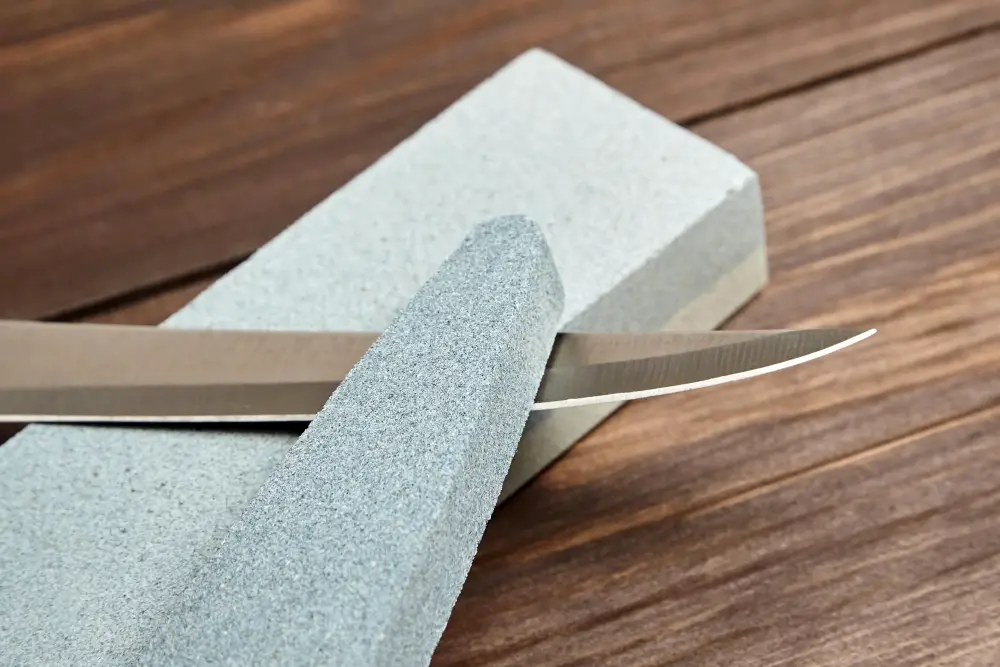
The higher the number, the finer and smoother it is. When it comes to sharpening kitchen knives, selecting the right grit size is crucial for achieving optimal results.
A coarse whetstone with a lower grit number (around #1000 or less) will remove more metal from your knife’s edge and quickly restore dull blades. However, this type of stone can leave scratches on your blade that require further honing with medium and fine stones.
Medium-grit stones (#1000 – #3000) are ideal for regular maintenance as they can both sharpen dull edges while also refining them without leaving deep scratches.
Finishing stones (#4000 – #8000) are used after medium-grit stones to polish and refine an already sharp edge even further. These high-grit whetstones create an incredibly smooth finish that allows you to slice through food effortlessly.
Choosing the appropriate grit size depends on how damaged or blunt your knife’s blade is before starting sharpening; however, using too low a grain could damage delicate Japanese knives’ thin blades while too high would not be effective in restoring severely damaged Western-style knives’ edges.
Western Vs. Japanese Knives
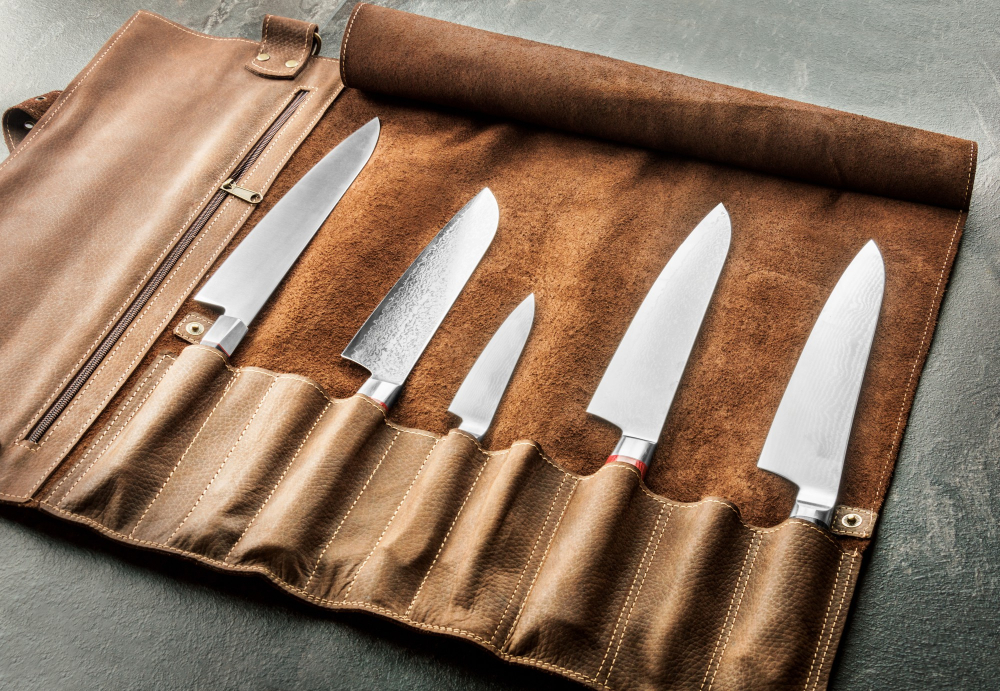
The primary difference between the two is in the blade shape and angle. Western knives typically have a thicker, heavier blade with a wider angle of around 20 degrees for each side of the edge.
This makes them ideal for chopping through tougher ingredients like meat or dense vegetables.
On the other hand, Japanese knives tend to have thinner blades with sharper angles that range from 10-15 degrees per side. This allows for more precise cuts and delicate work such as slicing fish or herbs.
It’s important to note that both styles can be used interchangeably depending on personal preference and intended use. However, if you’re looking to invest in a whetstone specifically tailored towards your knife style, it’s worth considering which type you primarily use in your cooking routine.
In general, Western-style knives benefit from coarser grits (around #1000) while Japanese-style knives require finer grits (between #3000-#8000).
Sharpening Vs. Honing
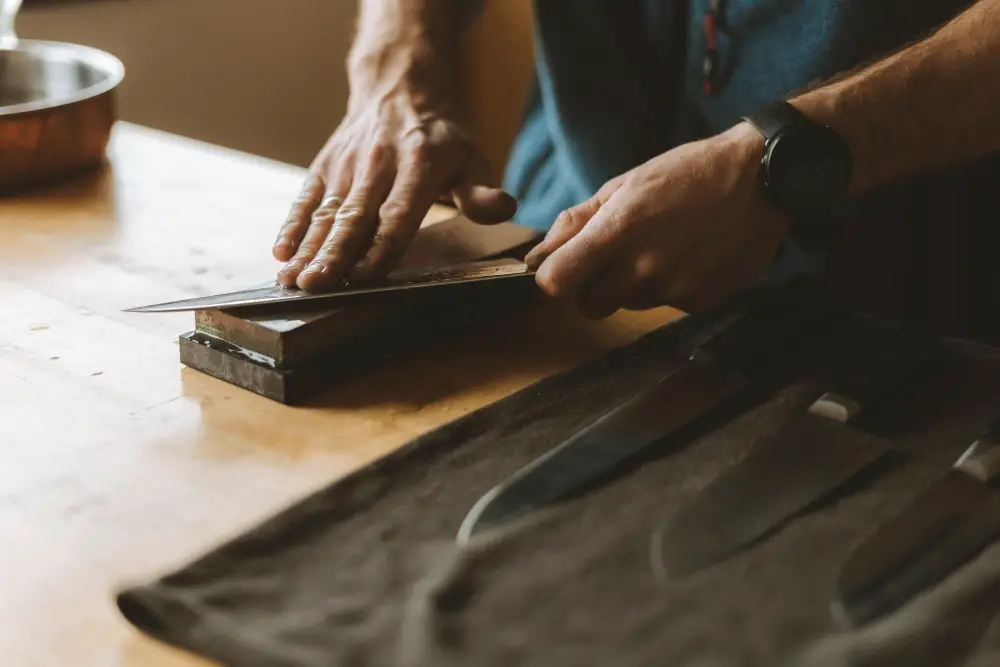
However, they are not the same thing. Sharpening is the process of removing metal from the blade’s edge to create a new sharp edge.
Honing, on the other hand, is simply realigning an already sharp edge.
Sharpening should be done when your knife has become dull or damaged and needs a complete overhaul. Honing should be done regularly between sharpenings to keep your knife performing at its best.
To hone your knife properly, you’ll need a honing steel or rod made of ceramic or diamond-coated steel. Hold the steel vertically with one hand while holding onto the handle of your knife with another hand at about 20 degrees angle against it (the exact angle may vary depending on what type of blade you have).
Then gently slide down along each side for several times until you feel like there’s no more resistance in cutting through food items.
Selecting Whetstones for Kitchen Knives
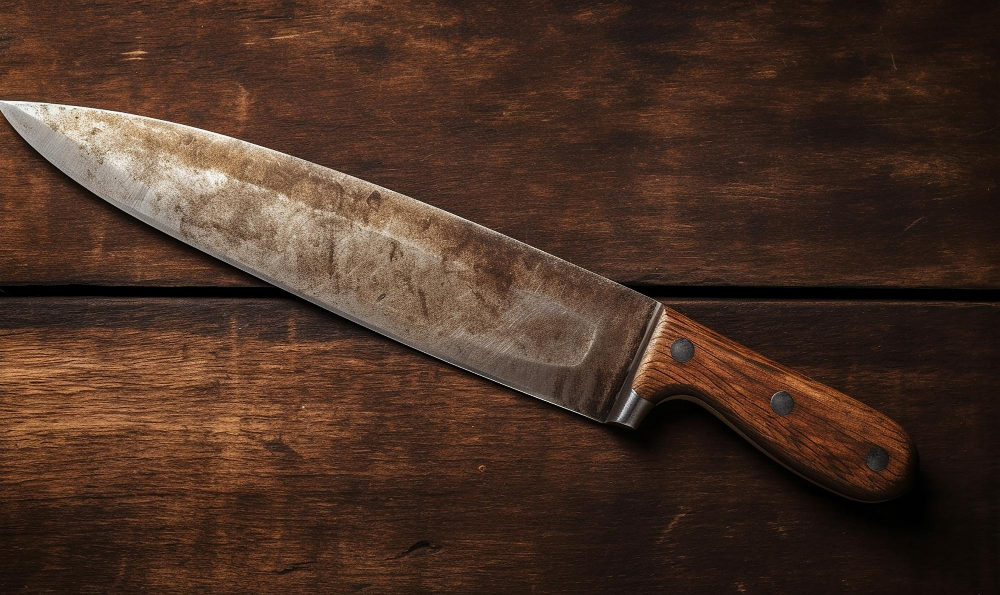
First and foremost is the grit size, which we’ll discuss in more detail later on. You’ll want to think about the type of knife you’re sharpening and its material composition.
For example, if you have a softer steel blade like those found in many Western-style knives, then a lower grit stone (around #1000) may be best suited for removing nicks and restoring an edge quickly. On the other hand, harder Japanese-style blades may require higher grit stones (upwards of #3000 or even #8000) for optimal results.
Another consideration is whether or not you need multiple stones with varying levels of coarseness. While some people prefer using just one stone throughout their sharpening process from start to finish – others find that having different options allows them greater control over how much metal they remove at each stage.
Whetstones for Different Knife Materials
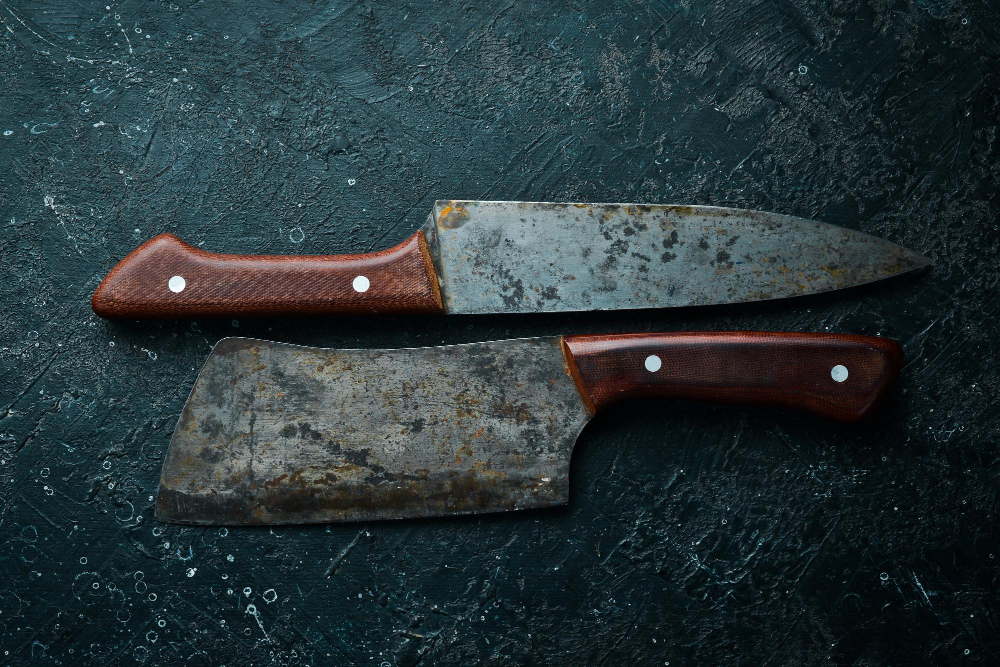
For example, softer steel knives like German-made ones are best sharpened with a coarse grit stone (#1000 or less). On the other hand, harder steel Japanese-made knives should be sharpened using finer stones in the range of #3000 to #8000.
Ceramic and serrated blades require specialized whetstones that can handle their unique properties. Ceramic blades need diamond abrasive stones while serrated edges need tapered or rounded rods to maintain their shape.
It’s important to research what type of knife you have before purchasing a whetstone so that you can select the appropriate one for your needs. Using an incorrect grit size could damage your blade and make it more difficult to achieve a sharp edge.
Coarse Whetstones: #1000 or Less
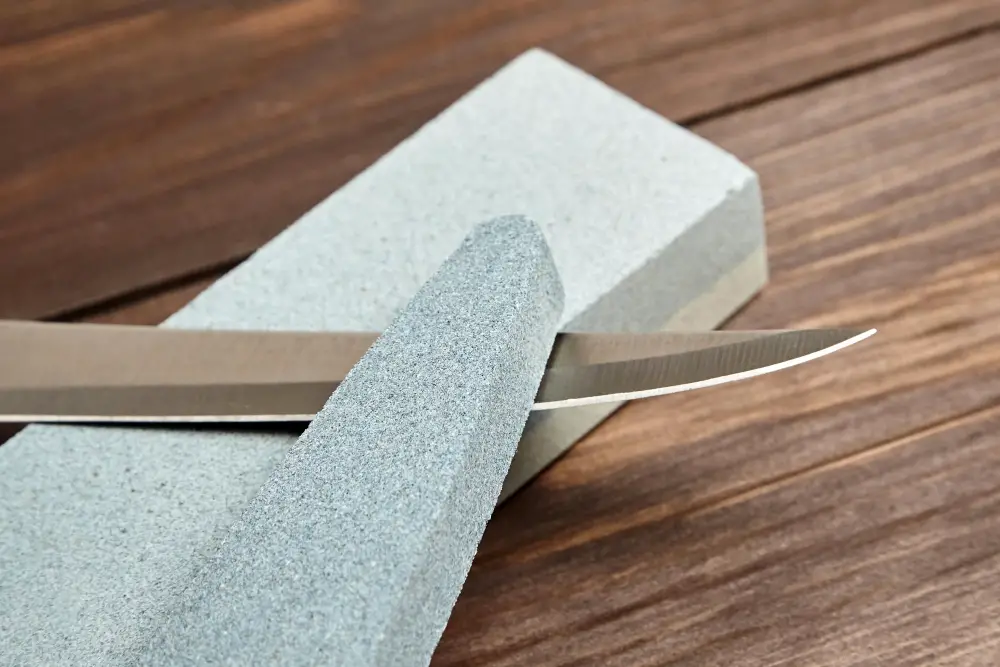
They have a grit size of #1000 or less, making them ideal for removing chips and nicks from the blade’s edge. These stones work by grinding away at the metal until it is even and smooth again.
When using a coarse whetstone, it’s important to keep in mind that you should only use light pressure when sharpening your knife. Applying too much force can cause further damage to the blade, which defeats the purpose of sharpening in the first place.
It’s also essential to ensure that you’re maintaining a consistent angle while sharpening with coarse stones. This will help prevent uneven wear on your knife and ensure that you’re getting an even grind across all parts of its edge.
Medium Stones: #1000 – #3000
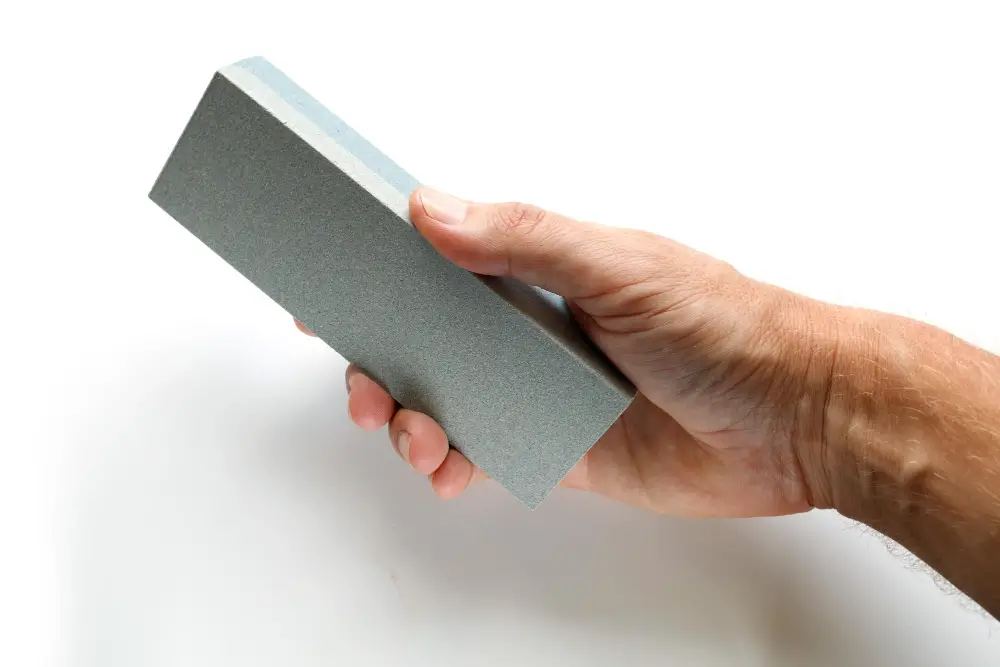
These stones are perfect for maintaining a sharp edge on your blades and removing any small nicks or chips that may have occurred during use.
When using medium whetstones, it’s important to keep in mind that they remove more material than finer grits. Therefore, it’s essential not to over-sharpen your knife as this can lead to a shorter lifespan of the blade.
To properly use medium whetstones:.
- Soak the stone in water for 5-10 minutes before use.
- Place the stone on a non-slip surface.
- Hold your knife at an angle of approximately 15-20 degrees against the stone.
- Using light pressure and consistent strokes, move the blade across each side of the stone until you achieve an even burr along its entire length.
- Flip over and repeat steps three through four on other side
- Wipe off any excess debris with a damp cloth
Finishing Stones: #4000 – #8000

Finishing stones have a higher grit count, ranging from #4000 – #8000. These stones are used for honing and polishing the blade edge after sharpening.
The finer grit of these stones will remove any remaining burrs or rough edges left by coarser stones while also refining the sharpness of your blade. The result is an incredibly sharp edge that glides through food effortlessly.
It’s important to note that finishing stones should only be used after using coarser grits as they won’t be effective at removing dullness or damage on their own. Overusing high-grit whetstones can lead to excessive wear on your knife’s blade.
When selecting a finishing stone, consider what type of knives you’ll be using it for and how often you plan on sharpening them. A higher-grit stone may not be necessary if you’re only working with softer materials like vegetables but could make all the difference when cutting through tougher meats or fish.
Preparing Your Whetstone
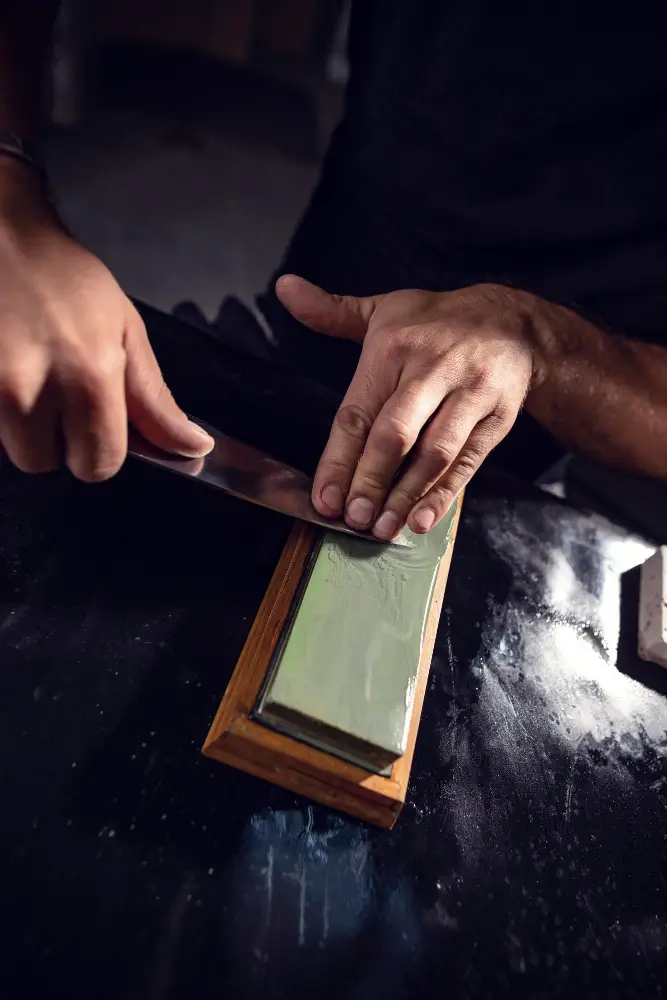
This will ensure that the stone is flat and free of any debris or residue that could affect the sharpening process.
To prepare your whetstone, begin by soaking it in water for at least 10-15 minutes before use. This will help to prevent any damage to the blade and also improve the effectiveness of the stone.
Once soaked, place a damp cloth underneath your whetstone to keep it from slipping during use. Then take a flattening stone or diamond plate and rub it across the surface of your wetted whetstone in circular motions until all high spots are removed.
After flattening, rinse off both stones with clean water and dry them thoroughly before storing them away for future use.
Proper Sharpening Technique

Proper technique is crucial to achieving a sharp edge without damaging your blade.
Firstly, soak the whetstone in water for about 10 minutes before use. This will help prevent any damage to the stone and ensure that it works effectively.
Next, hold your knife at an angle of approximately 15-20 degrees against the stone with one hand while holding onto its handle with another hand. Make sure that you maintain this angle throughout each stroke.
Using light pressure and starting from near the base of the blade, draw it across towards yourself along with a sweeping motion until reaching its tip while maintaining contact between both surfaces (blade & stone). Repeat this process on both sides of your knife several times until satisfied with results or when burrs are formed on either side indicating proper sharpening has been achieved.
Maintaining the Right Sharpening Angle

The angle at which you hold your knife against the stone will determine how sharp and precise its edge becomes.
For Western-style knives, a 20-degree angle is recommended while Japanese knives require a sharper 15-degree angle. To ensure consistency in maintaining this specific degree of sharpening angles, some whetstones come with an angled guide that helps keep your blade at just the right position.
It’s also essential to maintain consistent pressure on both sides of each stroke when using a whetstone. This ensures that both sides are evenly sharpened and prevents any accidental damage or unevenness from occurring.
How Often to Sharpen
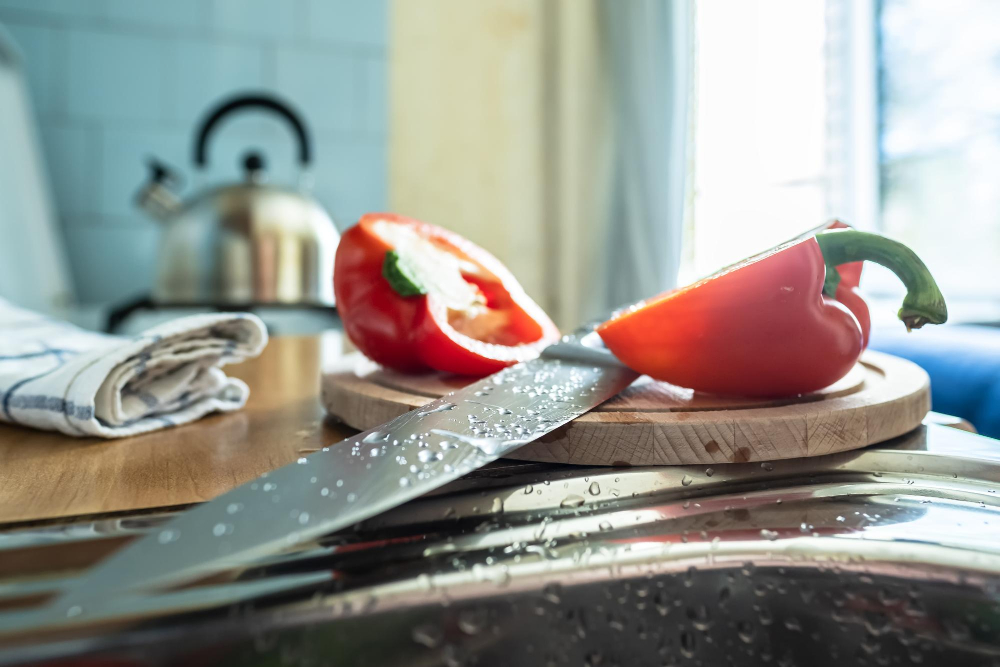
If you cook regularly and chop a lot of vegetables or meat, it’s recommended to sharpen your knife every 2-3 months. However, if you only cook occasionally or have softer cutting boards like plastic or bamboo, then once every 6 months may suffice.
It’s important to note that honing (using a honing steel) does not actually sharpen the blade but rather straightens out any microscopic bends in the edge caused by regular use. Honing can be done more frequently than actual sharpening – some chefs hone their knives before each use.
Ultimately, it’s up to personal preference and usage frequency when deciding how often to sharpen your kitchen knives.
Cleaning and Maintenance
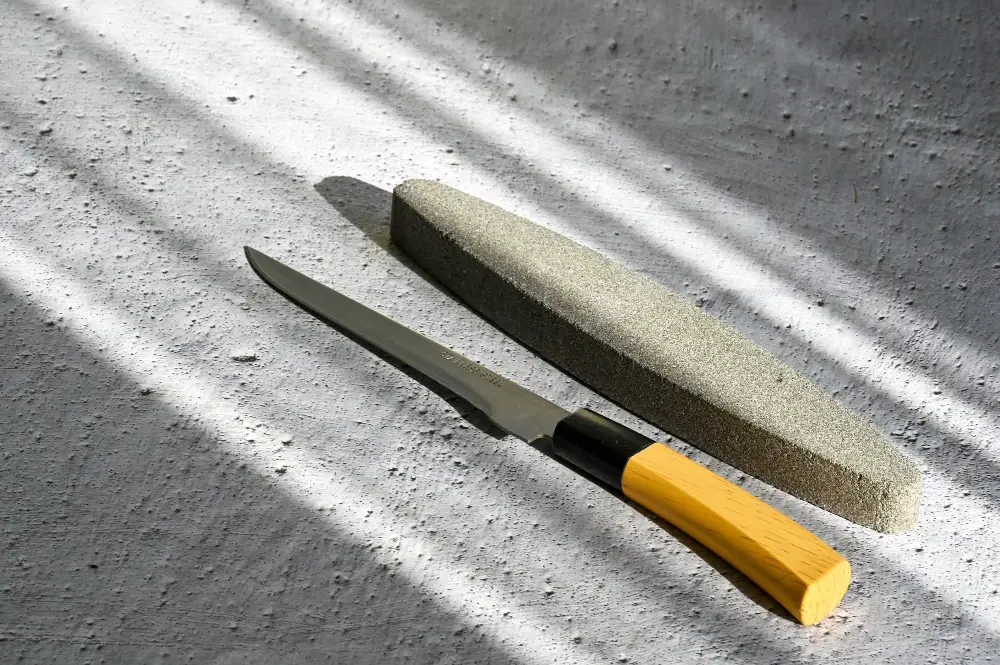
This will help prolong its lifespan and ensure that it continues to perform at its best.
To clean your whetstone, use a soft-bristled brush or cloth to remove any debris or metal shavings left behind from sharpening. You can also use a mild detergent solution if necessary, but be sure to rinse the stone thoroughly with water afterward.
It’s also essential to store your whetstone correctly when not in use. Keep it in a dry place away from moisture and direct sunlight.
Avoid stacking other objects on top of the stone as this could cause damage or deformation over time.
Flattening Your Whetstone Regularly
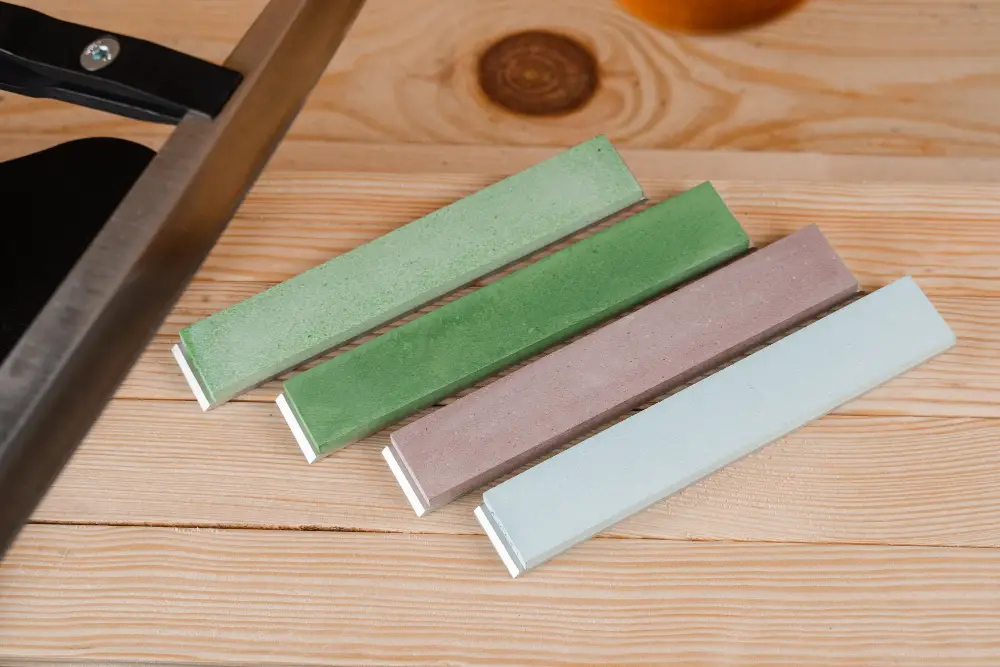
This can happen due to the constant friction between the blade and stone during sharpening. If left unattended, these imperfections can affect the quality of your sharpening results.
To ensure optimal performance from your whetstone, it’s essential to flatten it regularly. Flattening removes any high spots or grooves on the surface of the stone and restores its flatness.
There are several ways to flatten a whetstone; one popular method is by using a flattening plate or diamond lapping plate specifically designed for this purpose. Simply place your wetted whetstone onto the flattening plate and move it back-and-forth in circular motions until all high spots have been removed.
Flattening should be done every few months depending on how often you use your stones; more frequent use requires more regular maintenance.
Storing Your Whetstone
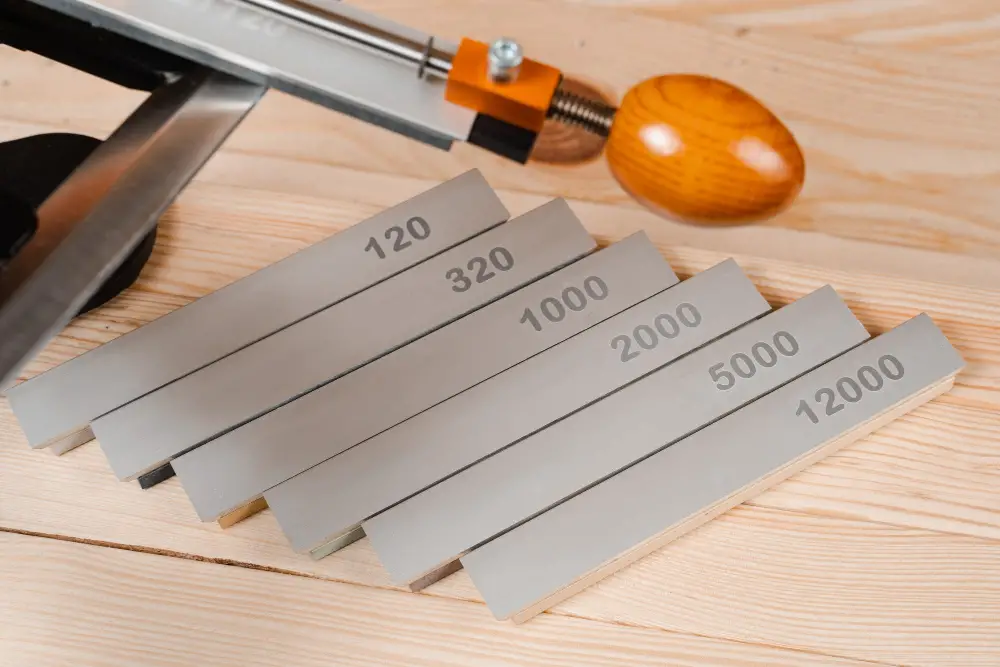
Storing it incorrectly can cause damage and reduce its lifespan. The best way to store a whetstone is in a dry place away from moisture and direct sunlight.
You can keep the stone in its original packaging or wrap it with a cloth or paper towel before storing.
If you have multiple stones, make sure they are separated by placing them in individual containers or wrapping them separately to avoid any scratches on the surface of the stones.
It’s also essential that you clean and dry your whetstones thoroughly before storing them away as any leftover debris could lead to mold growth over time.
FAQ
What grit is best for kitchen knives?
The best grit for kitchen knives is 8000 for experienced sharpeners, and 3000 to 6000 for beginners or unsure users.
Is 1000 grit enough for kitchen knife?
Yes, a 1000 grit stone is enough for a kitchen knife, though the edge may be slightly rough; a 400 grit stone is recommended for repairs.
What whetstone for kitchen knives?
For damaged, nicked, chipped, or extremely dull kitchen knives, use a coarse whetstone with a grit size of #1000 or less.
Is 6000 grit good for knives?
Yes, 6000 grit is good for knives, especially for meat cutting, while 8000 grit is recommended for fruits and vegetables.
How often should kitchen knives be sharpened using a whetstone?
Kitchen knives should be sharpened using a whetstone approximately every 2-3 months or as needed, depending on their usage.
What is the difference between using a high-grit and low-grit whetstone for kitchen knives sharpening?
The main difference between using a high-grit and low-grit whetstone for kitchen knives sharpening is that a high-grit whetstone provides a fine, sharp edge while a low-grit whetstone removes more material to repair or reshape the edge.
Can you combine different grit whetstones for optimal kitchen knife maintenance?
Yes, combining different grit whetstones for optimal kitchen knife maintenance is beneficial for achieving a sharp and well-maintained edge.
Continue reading:
